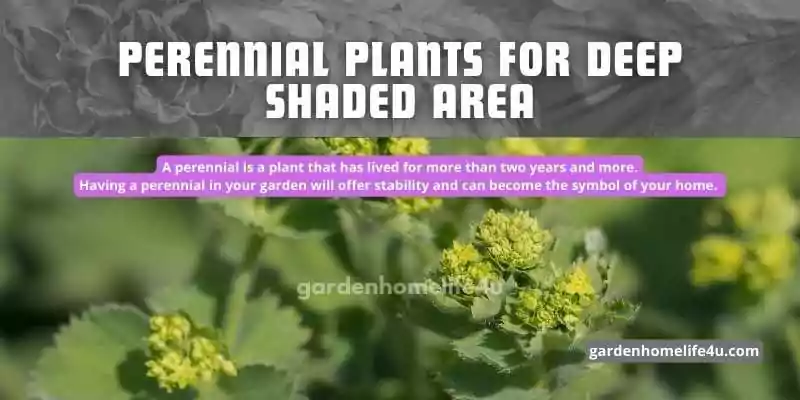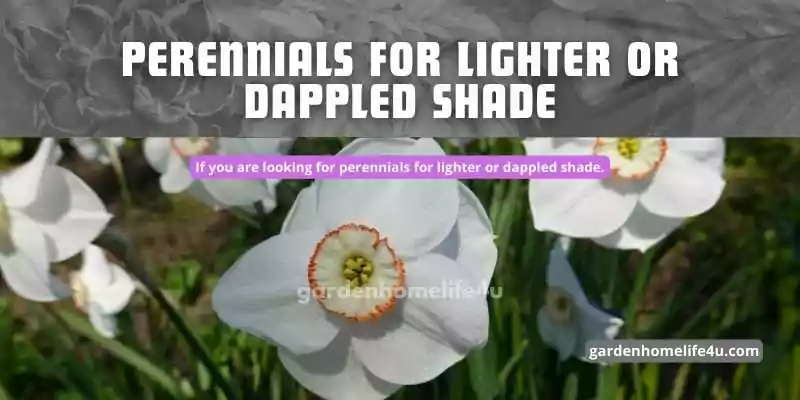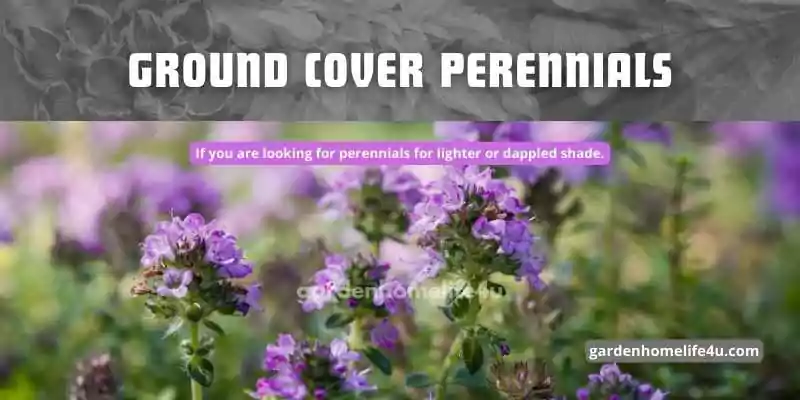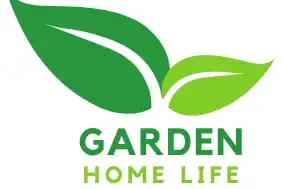In this guide, we embark on a journey of discovery, where we celebrate the allure and resilience of shade-loving plants. These green wonders have adapted to embrace the shadows, transforming shaded corners into lush landscapes of tranquility and natural elegance. “Best Shade-Loving Plants” presents a handpicked selection of flora that revels in the sheltered sanctuary of shadows. From the captivating beauty of flowering varieties to the soothing charm of foliage-rich plants, each selection is chosen for its ability to thrive and bring life to shaded spaces.
Our guide delves into the diverse world of shade-loving plants, offering a rich tapestry of options that cater to various garden styles and preferences. Whether you seek to add color and vibrancy to a shaded nook or desire a serene retreat under a canopy of green, these plants are poised to embrace the shadows with grace.
Moreover, this guide extends beyond outdoor landscapes, exploring the world of indoor plants that thrive in low-light conditions, beautifying your living spaces, and bringing nature indoors.
Besides crowded residential areas and tall buildings, there are many other reasons that can be the reason for your shaded gardens such as nearby tall trees or east or north-facing gardens in the UK which witness shade mostly all year round.
In such cases, growing beautiful, bright, and sun-loving plants can become challenging, and there is no guarantee that after all your efforts they will grow or brighten up your garden as you desire.
The shaded area also changes the quality and productivity of the soil and air as well. The watering level also changes and the whole environment becomes more humid and dense. Growing sun-loving plants in the shaded area mostly turn dark and moldy and could give your garden a haunted and gloomy look.
Well, no worries there are many types of plants, shrubs, ferns, climbers, and grass that love the shaded area and thrive in them. you can use the variegated plants for a shaded area to liven up your garden.
Plants for shaded areas grow in many colors that can make you feel spring in winter. You can opt for pale green, cream, yellow, white, lilac, light mauve, pale pink, and pastel color shade-loving plants in combination with dark green plants in the background.
Types of garden shade / shaded area

Before you go ahead and start buying the best plants for the shaded area in your garden. It is essential to acquire knowledge and understand what kind of shaded garden you have and what type of shade-loving plants you can grow in your garden.
Are you shocked to know that there are types of garden shades?
The simple answer is yes! If you want to make your garden picture perfect then it is vital to understand the shade of your garden to choose the perfect plants for the shaded area.
There are two aspects that you need to consider, First, find out which direction your garden is facing north, south, east, or west and how it could impact your decision to buy plants for shaded areas. You also need to consider what’s casting the shade and which aspect your garden has.
There are mainly three types of shades:
- Deep shade – This area tends to be cold and dry and is mostly found under the shade caused by buildings, evergreen trees, or on the north side of the wall.
- Dappled Shade – it is the kind of patchwork shade all over the summer but you get full sun from autumn to spring. This kind of shade is caused by deciduous trees and when they lose petals you start getting sunlight.
- Partial shade – mostly all gardens have one area that only receives sunlight for only a part of the day and which part depends on which direction your garden is facing. once you determine that you will be able to choose the best plants for the shaded area.
Perennial plants for deep shaded area

A perennial is a plant that has lived for more than two years and more. Having a perennial in your garden will offer stability and can become the symbol of your home.
There are many perennials that can grow in deep shade such as:
- Acanthus mollis – It is also known as bear’s breeches or oyster plant commonly. It can grow up to 3 to 6 ft tall. It has glossy dark green leaves with white or pink-veined flowers and green-purple bracts. It can spread up to 3ft.
- Alchemilla Mollis – This plant has received the Award of Garden Merit (AGM) from the Royal Horticultural Society (RHS). It is also known as a lady’s mantle. It has rounded lobed pale green leaves with tiny yellow-green flowers that start blooming from early summer to autumn.
- Astrantia Maxima – It is also a receiver of the AGM award from RHS society. It blooms small dusky or soft pink crowded flowers in the shape of a dome. It can grow in deep shade with moist to wet acid, alkaline, and neutral soil.
- Geranium phaeum – it is also known as “lily Lovell and mourning widow. It can grow and spread up to 32 and 18 inches respectively. It blooms rich purple-mauve color flowers from late spring to early summer.
- Rodgerisa pinnata ‘Superba’ – receiver of the AGM award for best plants for shaded area. It grows heavily crinkled veined leaves and tall panicles of small bright pink flowers from mid-to-late summer. It can grow 4ft tall and spread up to 3ft.
Perennials for lighter or dappled shade

If you are looking for perennials for lighter or dappled shade. You can buy a whole variety of perennial plants at affordable rates online from Primrose.
Here is a list of perennial plants for a shaded area or dappled shaded area in your garden.
- Actaea Racemosa
- Anemone hybrida or Honorine jobert
- Aruncus Diocius
- Aster thomsonii “nanus”
- Astilbe ‘Fanal’
- Brunnera macrophylla or jack forest
- Geranium sanguineum or bloody geranium
- Ligularia Dentata or leopard plant
- Primula beesiana or Candelabra Primrose
- Saxifraga fortunei
Ground cover perennials

If you want to upgrade your flower beds or want to style your pergolas with flowers then you can opt for these beautiful flowers that can grow in shade.
- Ajuga reptans ‘ burgundy glow’
- Flowering thyme
- White alyssum
- Sedum Dragon’s seed or dragons blood succulent
- Delosperma or ice plant
- Black Mondo Grass
- Sempervivum or hens and chicks
- Liriope or lilyturf
- Lamium Maculatum or spotted dead nettle
- Creeping Phlox
Ferns
Ferns that grow in damp shade
- Adiantum venustum
- Asplenium Scolopenderium
- Blechnum Chilense
Ferns that grow in very wet sites in the shade
- Mattteuccia Struthiopteris
- Onoclea Sensibilis
- Osmunda Regalis
Ferns that grow in dry shade
- Dryopteris affinis ‘ Cristata’
- Polystichum setiferum ‘Pulcherrimum bevis’
- Polypodium vulgare
Buy the fern plants for a shaded area in your garden.
Bulbs
Popular and award-winning bulb plants for a shaded area in your garden are the following:
- Anemone Blanda
- Cardiocrinum Giganteum
- Chinodoxa forbesii
- Convallaria Majalis
- Eranthis Hyemalis
- Galanthus nivalis
- Sicilla Sibiricia
- Erythonium dens-canis
Annuals and biennials plants for shaded area
Annuals are plants that fully grow and die within a year. They can provide diversity to your garden. They easily grow plants in shaded areas.
Biennials are planted that has a maximum life span of two years and grows very well in a shaded area.
Some examples of annuals and biennials plant for the shaded area in your garden are as follows:
- Begonia Semperflorens
- Bellis Perennis
- Impatiens or Bizzie Lizzie
- Lunaria Annua
- Myosotis or Forget-me-not
- Nemophila Insignis
- Nicotiana
- Schizanthus
- Tropaeolum or Nasturtium
- Viola or Pansy

